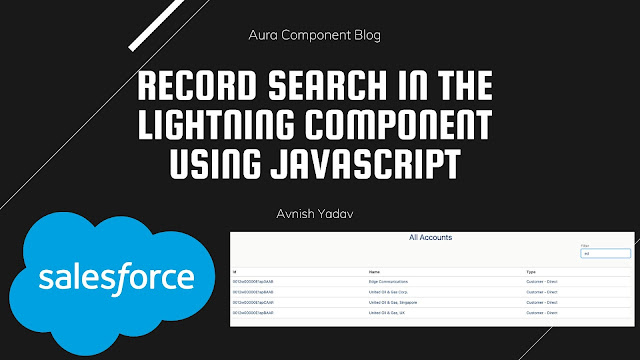What are Lightning Web Components?
 |
| What are Lightning Web Components? |
Welcome to our series on mastering Lightning Web Components (LWC). In this first post, we'll dive into what Lightning Web Components are, their history, their importance and advantages, and how they compare with Aura Components and other frameworks.
History of Lightning Web Components
To understand Lightning Web Components, it's helpful to know a bit about their history. Salesforce has always aimed to provide powerful, easy-to-use tools for developers. Initially, Salesforce developers worked with Visualforce, a component-based framework for building user interfaces. However, as web development evolved, the need for more dynamic and responsive UIs became apparent.
Enter the Aura Component framework, introduced by Salesforce in 2014. Aura provided a more modern, component-based approach to building applications. However, as the web standards evolved, Aura began to show its age. The need for a more standards-based, faster, and more efficient framework led to the development of Lightning Web Components, which Salesforce introduced in December 2018.
Lightning Web Components are built on modern web standards and provide a more streamlined development experience, leveraging the latest in web development technologies.
Importance and Advantages of Using LWC
1. Modern Web Standards Compliance Lightning Web Components are built using modern web standards like ES6+, Custom Elements, Shadow DOM, and Modules. This means that developers can use the latest JavaScript features and follow familiar web development practices, making the learning curve smoother for those coming from a web development background.
2. Performance Improvements LWC offers significant performance improvements over Aura Components. By leveraging native browser APIs, LWC reduces the overhead of a proprietary framework, leading to faster rendering and more responsive user interfaces. This results in a better user experience, particularly for complex and data-intensive applications.
3. Reusability and Modularity LWC promotes the development of reusable and modular components. Each component is encapsulated, meaning it can be developed, tested, and maintained independently. This modularity encourages code reuse, simplifies maintenance, and enhances collaboration among developers.
4. Enhanced Developer Productivity With LWC, developers can use a rich set of standard base components provided by Salesforce, which speeds up development. Additionally, the framework's alignment with modern web standards allows developers to leverage a vast ecosystem of tools, libraries, and resources, further boosting productivity.
5. Seamless Integration with Salesforce LWC is tightly integrated with the Salesforce platform, providing out-of-the-box solutions for common tasks like data binding, event handling, and state management. This deep integration simplifies the development of Salesforce applications and ensures they align with platform best practices.
Comparison with Aura Components and Other Frameworks
Aura Components vs. Lightning Web Components
- Performance: LWC offers better performance due to its reliance on native browser APIs, while Aura has more overhead due to its proprietary framework.
- Standards: LWC adheres to modern web standards, making it more accessible to developers with a web development background. Aura uses a more Salesforce-specific approach, which can be less intuitive for new developers.
- Complexity: LWC simplifies development with fewer abstractions and more straightforward syntax, whereas Aura can be more complex with its proprietary components and event handling mechanisms.
LWC vs. Other Web Frameworks (React, Angular, Vue)
- Integration with Salesforce: LWC is designed specifically for the Salesforce platform, providing seamless integration with Salesforce data and services. Other frameworks like React, Angular, and Vue can be used with Salesforce, but they require additional effort to integrate.
- Learning Curve: If you're familiar with web standards and modern JavaScript, LWC can be easier to pick up compared to proprietary frameworks. However, if you're coming from a React or Angular background, there will be some learning involved.
- Community and Support: While LWC has a growing community, it is still smaller compared to the communities around React, Angular, and Vue. However, Salesforce provides extensive documentation and support for LWC.
Conclusion
Lightning Web Components represent the future of Salesforce development. They offer a modern, efficient, and standards-based approach to building dynamic user interfaces on the Salesforce platform. With their many advantages, including improved performance, enhanced developer productivity, and seamless Salesforce integration, LWC is an essential tool for any Salesforce developer.
In the next post, we'll guide you through setting up your LWC development environment, so you can start building your own Lightning Web Components. Stay tuned!
What’s Next?
Join us in the next post where we will cover "Setting Up Your LWC Development Environment." We'll walk you through the necessary steps to get your environment up and running, ensuring you're ready to start developing with LWC. Don't miss out on the opportunity to enhance your Salesforce development skills with the latest technology!
.png)









Very Informative and helpful